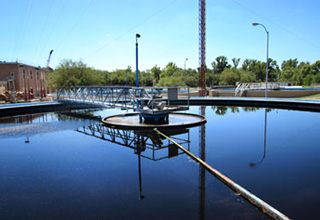Two wastewater projects attain energy savings using different approaches (Source: WaterWorld)
By Paul Wood
Nationally, energy use at water and wastewater utilities accounts for approximately 35 percent of a U.S. municipality’s energy budget. Electricity use generally accounts for 25-40 percent of the operating budgets for wastewater utilities (NYSERDA, 2008). The wastewater community knows that there are often more energy-efficient ways to run their treatment plants. Energy efficiency is often not viewed as a reason to carve out a specific freestanding project. Time and again, energy efficiency is only included as an afterthought on major renovation projects. Sometimes, the original plant design has some inherent issue that must be corrected to enable more efficient strategies to be executed. Frequently, inertia prevents relatively easy changes from being made that could reduce energy consumption.
Recently, Lockwood, Andrews & Newnam Inc. (LAN), a planning, engineering and program management firm, completed two wastewater projects that resulted in significant energy savings. Though different approaches were undertaken at each facility, similar savings were obtained.
The first project, a renovation and renewal of the 10-million-gallon-per-day (MGD) Southwest Regional Waste Water Treatment Plant at the City of Conroe, Texas, involved implementing hydraulic modifications that allowed much better aeration control. This better aeration control was the key to ensuring that the newly implemented simultaneous nitrification/denitrification process would be successful.
The second project, the renovation and renewal of the 4.5-MGD Northwest Wastewater Treatment Plant at the City of Copperas Cove, Texas, involved replacing a multistage blower with a high-speed turbo blower, and replacing the diffused aeration system with a submersible aeration mixer while the aeration basins remained in service.

